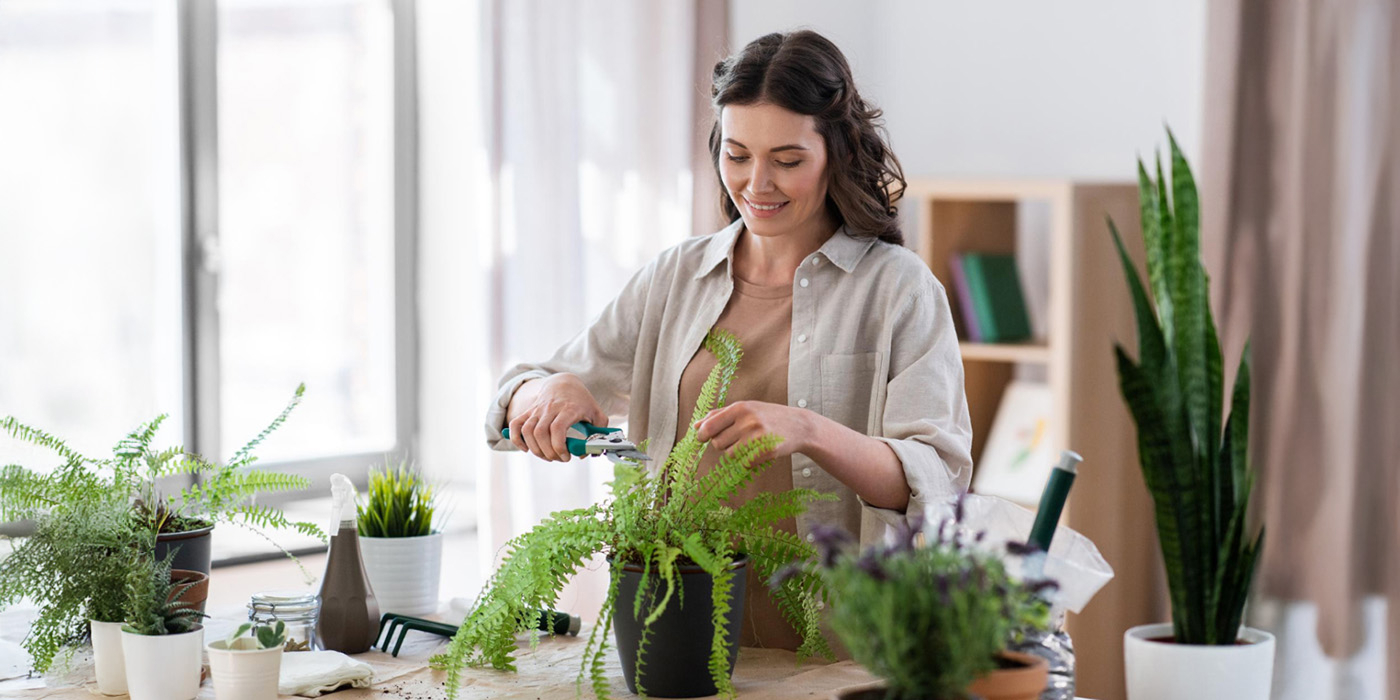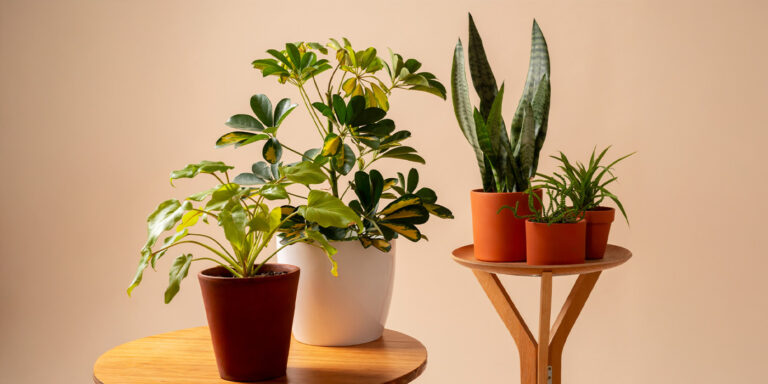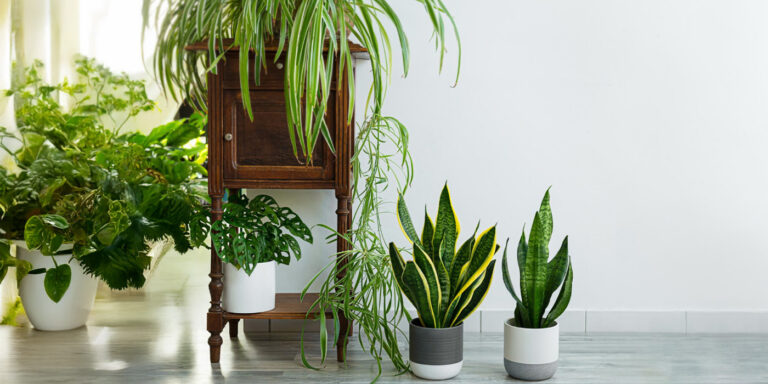There’s just something about having plants inside that immediately gives a house life. A corners of quiet are enlivened, the air smells healthier, and even a bad day seems less so when surrounded by a little green. Lots of people are afraid to get plants at home because they don’t want to spend time caring for them. The thing is, you don’t have to be a gardening expert to grow them. If you select the appropriate varieties and learn the basics of taking care of houseplants, you can have a peaceful, invigorating area without doing much work.
This blog will take you through some of the easiest choices for easy-maintenance indoor plants and address the most asked questions individuals have about keeping them healthy and alive.
What Makes Indoor Plants Special?
Indoor plants aren’t ordinary greens transferred indoors but rather types that have the ability to adjust to partial sunlight, controlled watering, and uniform temperature conditions of our homes. Different from outdoor plants subject to rain and natural cycles, indoor plants thrive in a well-regulated climate. This makes them ideal companions for apartments, offices, and even small bedrooms. From bringing a soothing hint of nature into their lives to being a trendy element of home design, indoor plants are created to integrate into busy lifestyles.
Discovering the Various Types of Indoor Plants
They are not all created equal, and that’s the charm of them. Some, such as cacti and succulents, thrive on neglect and only need a small amount of water. Others, like tropicals, prefer heat and humidity and thrive with periodic misting. There are flowering plants like Peace Lilies and Anthuriums that pay you back in the form of their beautiful flowers, and there are foliage plants like ZZ plants and Snake Plant that are famous for their vibrant leaves. You know the types when you can pick plants that suit your lifestyle instead of dominating it.
Why Indoor Plants Are Worth Having Around
Science indicates that plants can clean the air by eliminating toxins and increasing oxygen. Beyond health, they provide a soothing environment that decreases stress and enhances concentration, making them ideal for both work and leisure areas. In Indian homes particularly, plants are typically associated with goodness, fortune, and positive vibes. Whether you’re adding a touch of green to your living room or placing one by your work desk, indoor plants enrich your environment in ways that go far beyond looks.
Easy, Low-Maintenance Indoor Plants Perfect for Every Home
Houseplants can totally transform the feel of a home. A touch of green can brighten up bare interiors, clean the air, and even make everyday life more relaxing. But for a lot of people, the problem isn’t getting plants, it’s figuring out how to care for indoor plants without devoting hours of their time to them.
The best part is that not every plant needs elaborate rituals. Some species are already strong and demand very little care, making them ideal for novices or anyone who doesn’t mind not having to worry about watering schedules. These easy-maintenance indoor plants add life and beauty to your home without asking for too much in return.
Best Indoor Plants for Home
When selecting the best plant to put in your home, begin with ones that are known to grow well indoors. These are the most reliable options that combine health benefits with ease:
- Money Plant: This plant is typically associated with prosperity and positivity, and it’s also forgiving if you skip a watering or two.
- Snake Plant: Known for its air-cleaning abilities, it loves low light as well as bright places.
- Peace Lily: White flowers give it a soft touch to interiors while enhancing the air quality.
- Areca Palm: A tropical option that introduces freshness and complements living rooms well.
- Aglaonema: Vibrant leaves and minimal effort make it a favorite among beginners.
- Succulents: Tiny, fashionable, and hardy, ideal for desks or window shelves.
- Cacti: One of the most resilient plants, cheerful even when you neglect it for weeks.
All these types can survive with little effort. For an in-depth guide, you may go through this blog Ultimate Guide for Best Indoor Plants for Home.
FAQ
How often should we water indoor plants?
The frequency varies depending on the type of plant, season, and pot size. As a general rule, most houseplants like to be watered when the top inch of soil is dry to the touch. The most common error is overwatering, and it’s always best to test the soil first before pouring more water. Succulents and cacti will get water only every two or three weeks, while leafed plants such as Peace Lilies can be watered weekly. A quick trick is to stick your finger in the soil, if it feels dry, water it. This little trick is the key to knowing how to take care of indoor plants correctly.
What is the biggest killer of indoor plants?
Beyond any doubt, overwatering is the most common cause of plant death in the house. Individuals mistakenly believe additional water means additional growth, but this kills the roots and leads to rot. Faulty drainage will exacerbate the issue, as no drainage exists for water to escape. The second largest problem is putting plants into incorrect lighting conditions. A sun-worshiping cactus cannot be expected to thrive in a shady corner, any more than a shade-worshiping fern can thrive under direct sunlight. Understanding these fundamentals enables you to select easy-maintenance indoor plants suited to your environment and lifestyle.
What are the 5 basic needs of a plant?
All plants, whether in a forest or on a living room shelf, need five things:
- Light: For photosynthesis, but varying intensity and duration according to plant.
- Water: For growth, but always in the correct amount.
- Air: Fresh air to allow plants to breathe and prevent disease.
- Nutrients: Soil has minerals, but regular application of fertilizer replenishes them.
- Space: Roots require space in which to expand, so repot when the plant has filled its container.
Equilibrating these five requirements is the essence of learning to properly care for indoor plants.
Do indoor plants need direct sunlight?
Not all plants need direct light, and many indoor plants actually do best in indirect or filtered light. Snake Plants, Aglaonemas, and Peace Lilies are all able to thrive in low-light environments. Direct sunlight, particularly through glass, will at times burn leaves. Conversely, plants such as cacti and succulents love to be in brighter lights and perform optimally when positioned close to a window with loads of sun. It is a matter of watching your plant, if the leaves pale or become stretched, it could be hungry for more light.
How many hours do indoor plants need sunlight?
Most houseplants thrive on four to six hours of indirect lighting per day. Varieties that are more tolerant of shade can get by with less, but those that can tolerate sun might need up to eight hours. During winter when daylight is limited, try relocating plants near windows or employing artificial growing lights if necessary. Getting the proper amount of light is a significant aspect of maintaining easy-maintenance indoor plants in peak condition year-round.





 Bundle Of Office Plants - Aglaonema super white, Scindaspus, Fittonia, sanseveria golden and Alocasia black velvet.
Bundle Of Office Plants - Aglaonema super white, Scindaspus, Fittonia, sanseveria golden and Alocasia black velvet.